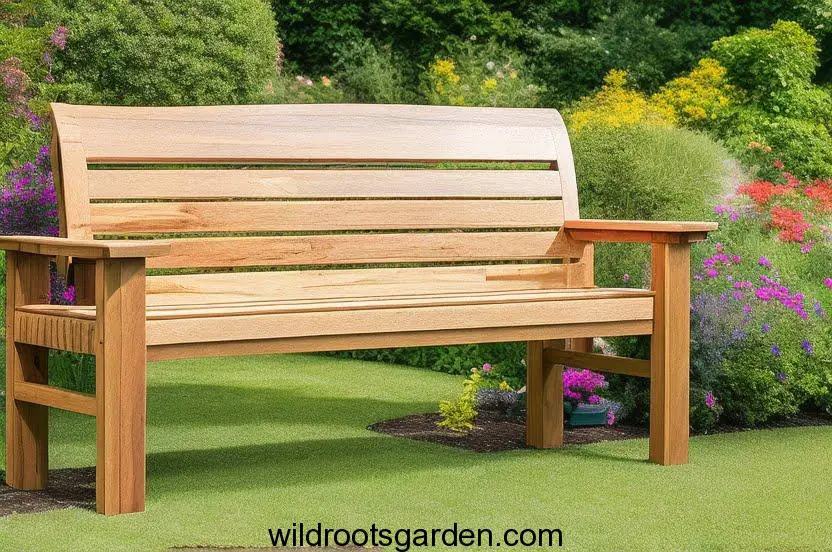The best wood for garden bench slats. Learn how to pick the perfect wood for your garden bench slats. Ensure longevity, aesthetics, and functionality with the right choice.
It’s important to choose the correct wood for the slats while building a garden bench. The aesthetic, sturdiness, and longevity of the bench can all be considerably influenced by the wood selection. We will examine the best wood possibilities for garden bench slats in this post, taking into account many aspects like strength, weather resistance, price, and aesthetics. This guide will assist you in making a wise choice whether you’re a DIY enthusiast or intend to buy a pre-made garden bench.
Table of Contents
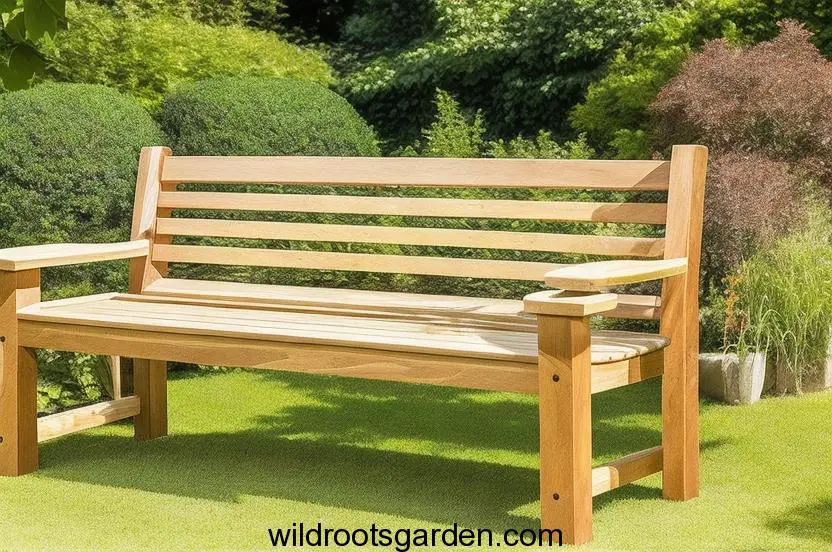
Importance of Choosing the Right Wood
For a number of reasons, the type of wood you use for your garden seat slats is crucial. First off, different types of wood have varying degrees of toughness and resistance to the elements. Second, the type of wood has an impact on the bench’s overall attractiveness, enhancing the garden and landscape in the area. Last but not least, choosing the proper wood guarantees the durability of your bench, saving you the headache of having to make repeated repairs or replacements.
Factors to Consider When Choosing Wood
Let’s examine the important things to take into account when selecting the best wood for garden bench slats before delving into particular wood options:
- Durability: Opt for woods that can withstand exposure to outdoor elements, such as rain, sunlight, and temperature fluctuations.
- Resistance to Decay: Look for woods that are naturally resistant to rot, insects, and fungal growth, ensuring the longevity of your bench.
- Appearance: Consider the wood’s color, grain patterns, and overall aesthetics to ensure it complements your garden’s style and theme.
- Maintenance: Evaluate the required maintenance efforts, such as staining, sealing, or regular cleaning, to keep the wood looking its best.
- Availability and Cost: Take into account the availability and cost of the wood, as it can impact your budget and ease of access.
Now, let’s explore some of the best wood options for garden bench slats:
Cedar: A Popular Choice for Garden Bench
For garden bench slats, cedar is a very popular option because of its all-natural beauty, durability, and resistance to decay. Its characteristic reddish-brown hue and intricate grain pattern give your seat a classy, classic look. Natural oils are included in cedar woodwork as a preservative and protect it from rot and insect damage. Moreover, cedar is lightweight and has a lovely scent, making it simple to deal with when building.
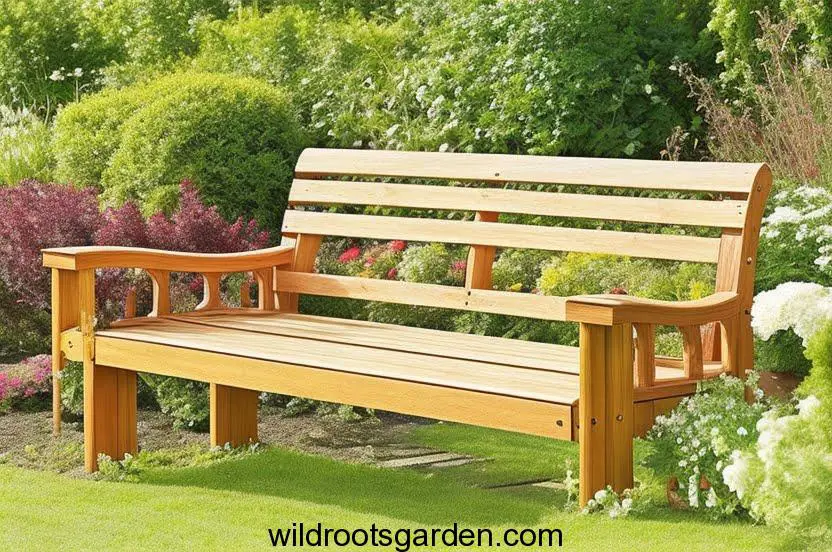
Teak: A Durable Option for Garden Benches
Teak is a popular choice for garden bench slats because of its outstanding durability and resistance to dampness. It has silica and natural oils that keep the wood from rotting and keep insects away. Teak wood first has a lovely golden-brown hue that gradually turns into a lovely silver-gray patina. Teak is a more expensive alternative to wood, but due to its durability and low care needs, it is a wise investment.
Redwood: Natural Beauty for Garden Benches
For garden bench slats, redwood is a visually pleasing wood option. Its appealing grain pattern and warm, reddish-brown color add to the bench’s beautiful appearance. Due to its high tannin content, redwood is naturally resistant to rot, insects, and warping. It is a popular choice among DIY enthusiasts because it is also fairly lightweight and simple to use.
Pine: Affordable and Versatile
One of the most readily available and reasonably priced materials for garden bench slats is pine wood. Although it might not be as durable naturally as cedar or teak, it can be treated with chemicals to increase its resistance to insects and deterioration. Pine has a light tint that makes it simple to paint or stain to match the design of your garden. It is a flexible wood that complements many bench designs and provides an affordable option.
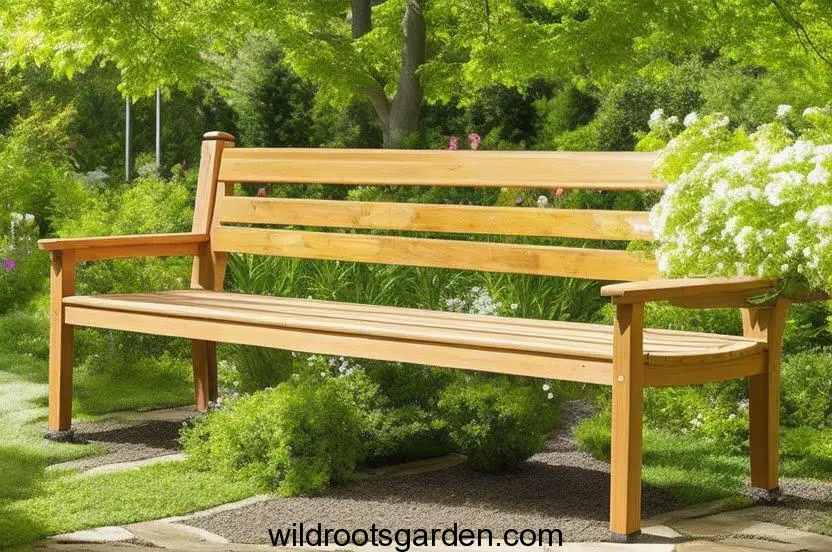
Oak: Strong and Resistant
Oak is a dependable material for garden bench slats because of its strength and dependability. It is a sturdy hardwood that can survive the elements and ward off degradation. Oak wood has a light to medium brown color and distinct grain patterns, which give your bench a touch of refinement. Oak may cost more than other options, but because of its durability and strength, it is a wise investment.
Ipe: Exotic Hardwood for Longevity
Ipe wood, sometimes referred to as Brazilian walnut, is a strong, solid material that works well for outdoor applications. It features a crisp grain pattern and a deep brown tone with slight variations that improve its aesthetic appeal. Ipe is perfect for garden bench slats that must endure the test of time because of its extraordinary resistance to decay, insects, and harsh weather. While being on the more expensive end of the price spectrum, ipe wood is a desirable option due to its durability and little care needs.
Acacia: Affordable Hardwood Option
For garden bench slats, acacia wood is a durable hardwood option that is reasonably priced. It has a warm golden-brown color and a distinctive grain pattern that gives your bench personality. When properly sealed or treated, acacia wood is resistant to rot and insects. Because of its relatively light weight and ease of use, it is a good option for do-it-yourself projects or customers on a tight budget.
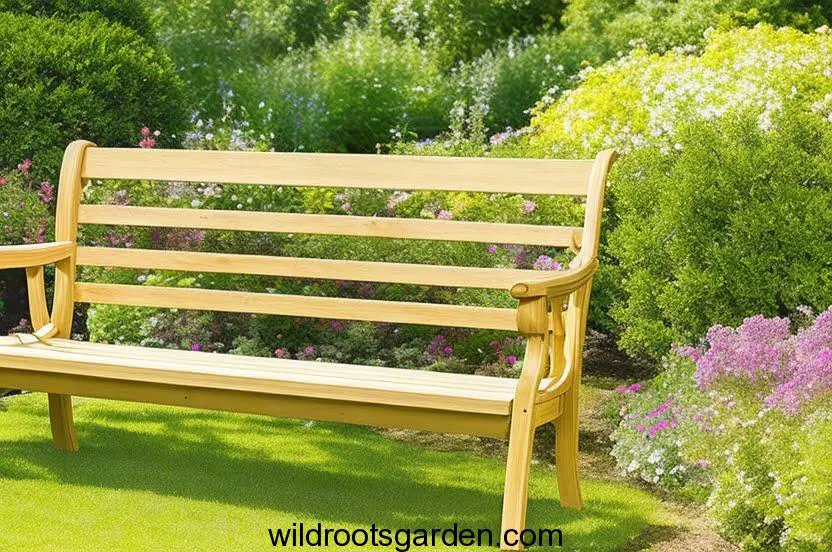
Maple: Classic Choice for Garden Benches
For garden bench slats, maple wood is a traditional option because of its hardiness, strength, and appealing grain patterns. It has a light tint with small variances that let you either highlight the wood’s inherent beauty or add other stains for a distinctive touch. While maple is a hardwood that can survive external elements, it could need maintenance from time to time to maintain its aesthetic and durability.
Choosing the Right Wood for Your Needs
Consider your unique needs and preferences when choosing the best wood for the slats of your garden bench. Consider issues including affordability, availability, maintenance requirements, attractiveness, durability, and decay resistance. You may make an informed choice that will produce the results you want and assure a durable, attractive garden bench by examining these factors.
Maintaining Your Garden Bench
Regular maintenance is necessary to keep your garden bench in top shape. For it to last a long time, adhere to these rules:
Cleaning: Periodically clean the bench using a mild soap solution and a soft brush. Rinse thoroughly and allow it to dry before applying any treatments.
Staining/Sealing: Apply a protective stain or sealant to shield the wood from moisture and UV damage. Follow the manufacturer’s instructions for the best results.
Inspect for Damage: Routinely inspect the bench for any signs of wear, loose slats, or damage. Address issues promptly to prevent further deterioration.
Cover or Store: Consider covering the bench during harsh weather conditions or storing it indoors during winter months to minimize exposure to extreme elements.
Refinishing: Over time, you may need to refinish the bench to restore its original beauty. Sand the surface and apply a fresh coat of stain or paint as desired.
Conclusion
Slats for garden benches should be made of the proper wood in order to provide long-term use, durability, and aesthetic appeal. The best wood selections include cedar, teak, redwood, pine, oak, ipe, acacia, and maple, each of which has special qualities and advantages. To make an informed choice, take into account your unique requirements, including decay resistance, beauty, maintenance needs, and budget. You may make a stunning and long-lasting outdoor seating area to enjoy for many years by choosing the best wood for your garden bench.
FAQs
Q: Can I use treated lumber for garden bench slats?
A: While treated lumber can provide additional protection against decay and insects, it’s important to ensure the treatment is safe for outdoor use and does not contain harmful chemicals that may leach into the surrounding environment.
Q: How often should I apply stain or sealant to my garden bench?
A: The frequency of applying stain or sealant depends on various factors such as the type of wood, weather conditions, and the product used. As a general guideline, consider reapplying every 1-3 years or as recommended by the manufacturer.
Q: Can I leave my garden bench exposed to the elements?
A: While certain woods are more resistant to weather elements than others, it’s generally advisable to protect your garden bench from excessive exposure to rain, sunlight, and extreme temperature fluctuations. Using covers or storing them during harsh weather can prolong their lifespan.
Q: How can I enhance the longevity of my garden bench?
A: In addition to choosing the right wood, regular maintenance, such as cleaning, staining/sealing, and addressing any issues promptly, can significantly extend the lifespan of your garden bench.
Q: Are there any eco-friendly wood options for garden bench slats?
A: Some eco-friendly options include sustainably sourced woods certified by organizations like the Forest Stewardship Council (FSC) or reclaimed/recycled woods that repurpose existing materials, reducing the demand for new timber.

